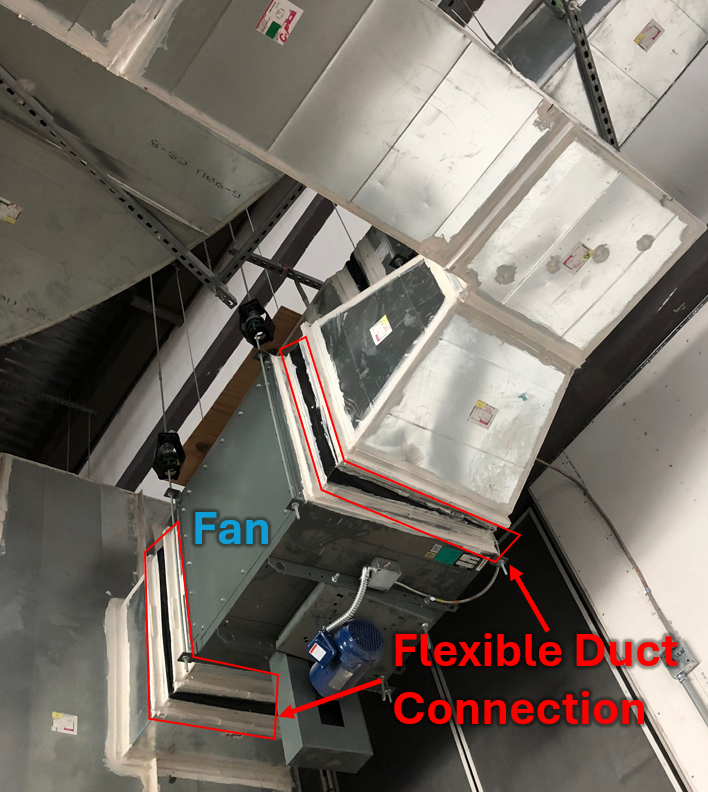
In HVAC Ductwork, Pressure and Velocity are two standards around which Engineers design duct plans. Building duct to a Higher Pressure class however doesn’t improve the system’s performance in handling vibrations that accompany changes in Velocity.
In Duct Fabrication, the familiar criteria on the checklist towards reaching an excellent Pressure Class performance include Duct Gauge used, use of Reinforcements, the types of transverse joints and longitudinal seams and whether those joints and seams and duct wall penetrations have been sealed. But none of the aforementioned criteria play a part in reducing vibrations thru the duct system resulting from changes in the velocity of air. In fact, two of the criteria – Increasing the Thickness of the duct wall gauge and/or Increasing Reinforcement Spacing—causes MORE vibration in the ductwork (according to SMACNA standards 3rd edition page 11.12) leading to the quandary that Ductwork can be built to the highest standards when it comes to Duct Pressure, but fail when it comes to Velocity and the vibrations resulting from changes in it.
A Mechanical Engineer’s skill in designing a quiet commercial duct system that’s free of structural noise entails a lot of nuances that aren’t so obvious as just building it to be stronger and with more stability. Instead it requires designing it smarter and with the use of products manufactured specific to isolate noise and placing them in the area where most of the vibrations emanate from and before it can leave the space—Mechanical Rooms near the Fans and Blowers.
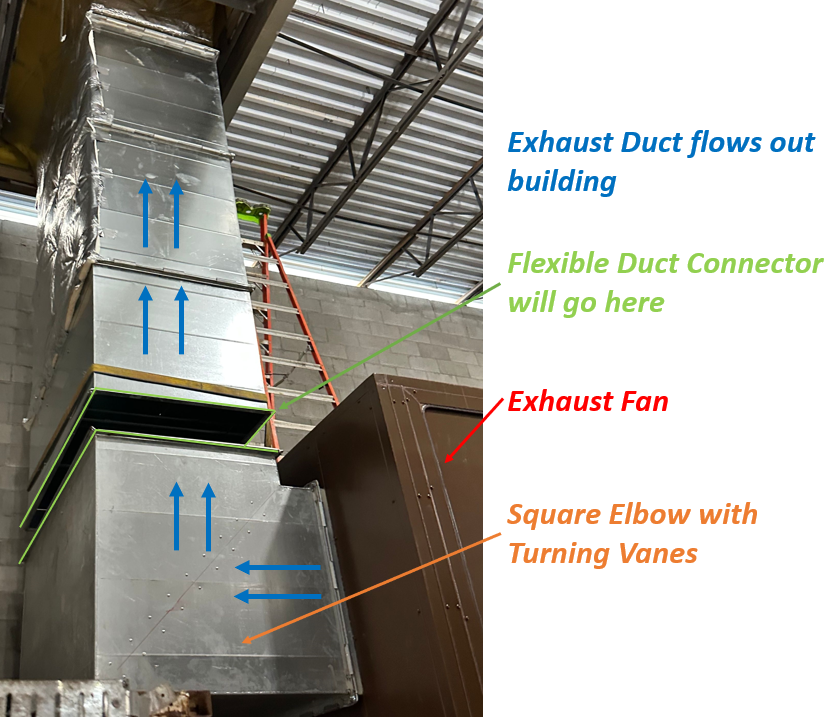
Unlike the wide array of products used to isolate vibrations, one of these is fabricated in the duct shop: a duct mating joint called a Flexible Duct Connector.
What is a Flexible Duct Connector?
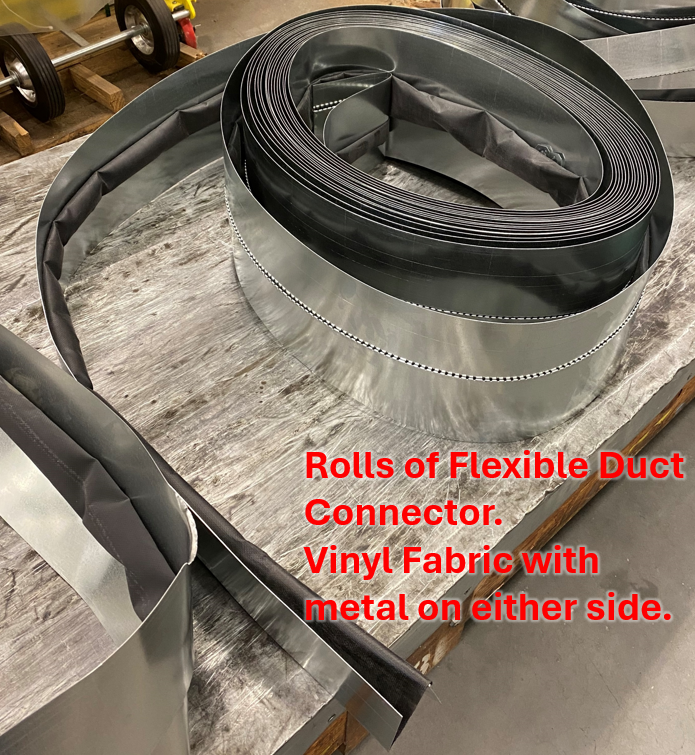
A flexible duct connector is a flexible fabric that’s lock-seamed on either side to a strip of metal that is used to control and reduce vibration in HVAC duct systems. The Flex Connector is fabricated into a 4-sided frame in the duct shop such that it becomes a mating joint that connects to the duct being installed. It serves almost like a moveable cut joint in the run of the duct, barely standing out as something other than the duct itself, and is used to control vibration in duct systems while also providing a benefit to installer of allowing ductwork to fit that might be a little bit off from the plans drawings, but more about that later.
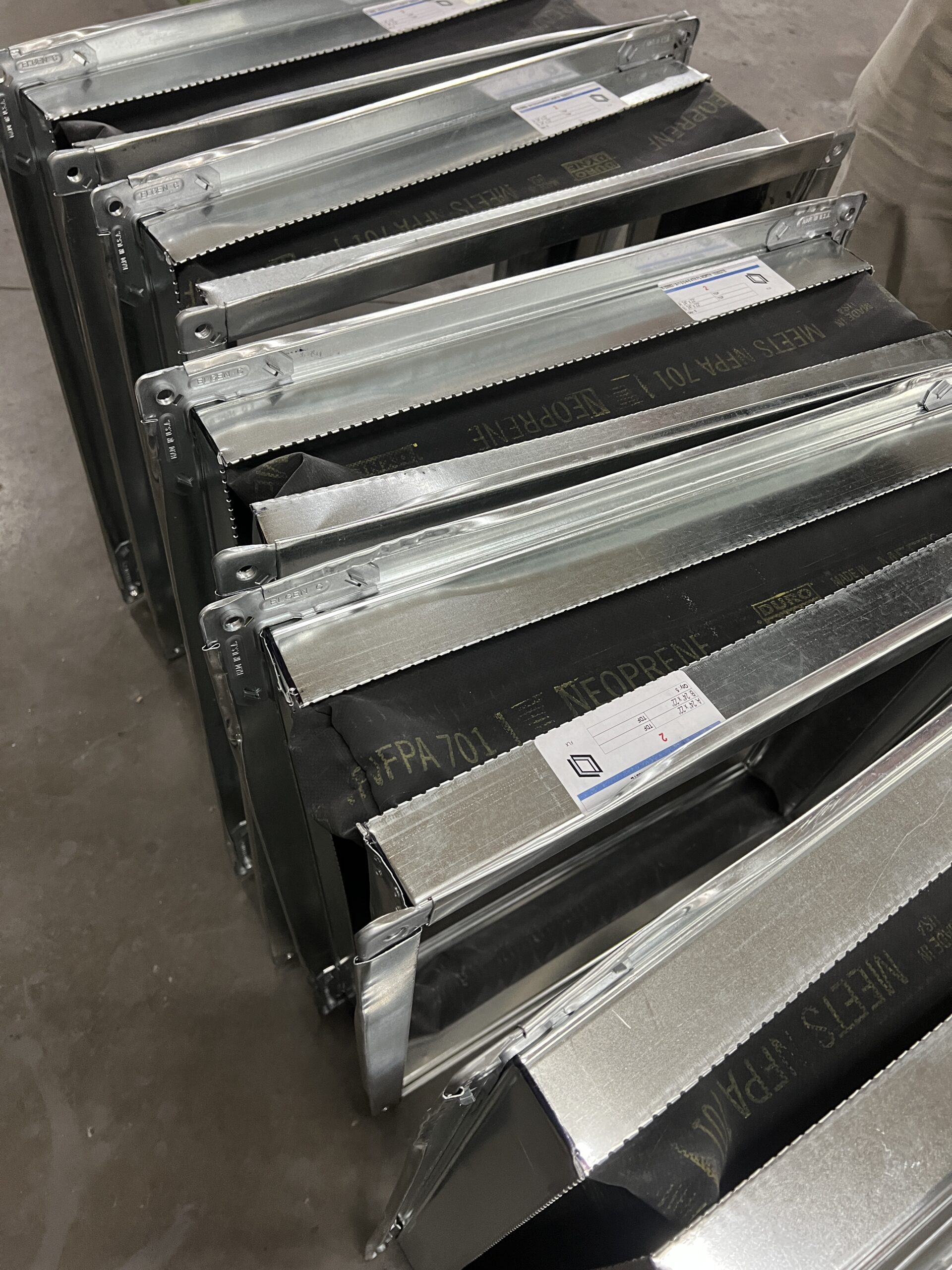
Flexible Duct Connectors have been around since the advent of air conditioning and were originally made of an Army Canvas and referred to as Canvas Connectors even though today’s product feels less heavy and stiff and more like a light rubber embedded flexible canvas lock seamed on either side by a strong Fabric to Metal connection. When it comes to the fabric, heavier is not better even though many specs still, decades later, call for 30 oz Neoprene even though it’s tear resistance doesn’t compare to the 17 oz Vinyl Excelon. No matter the fabric chosen, it should be relatively lightweight with a high tensile strength, somewhat stretchable but always tear resistant.
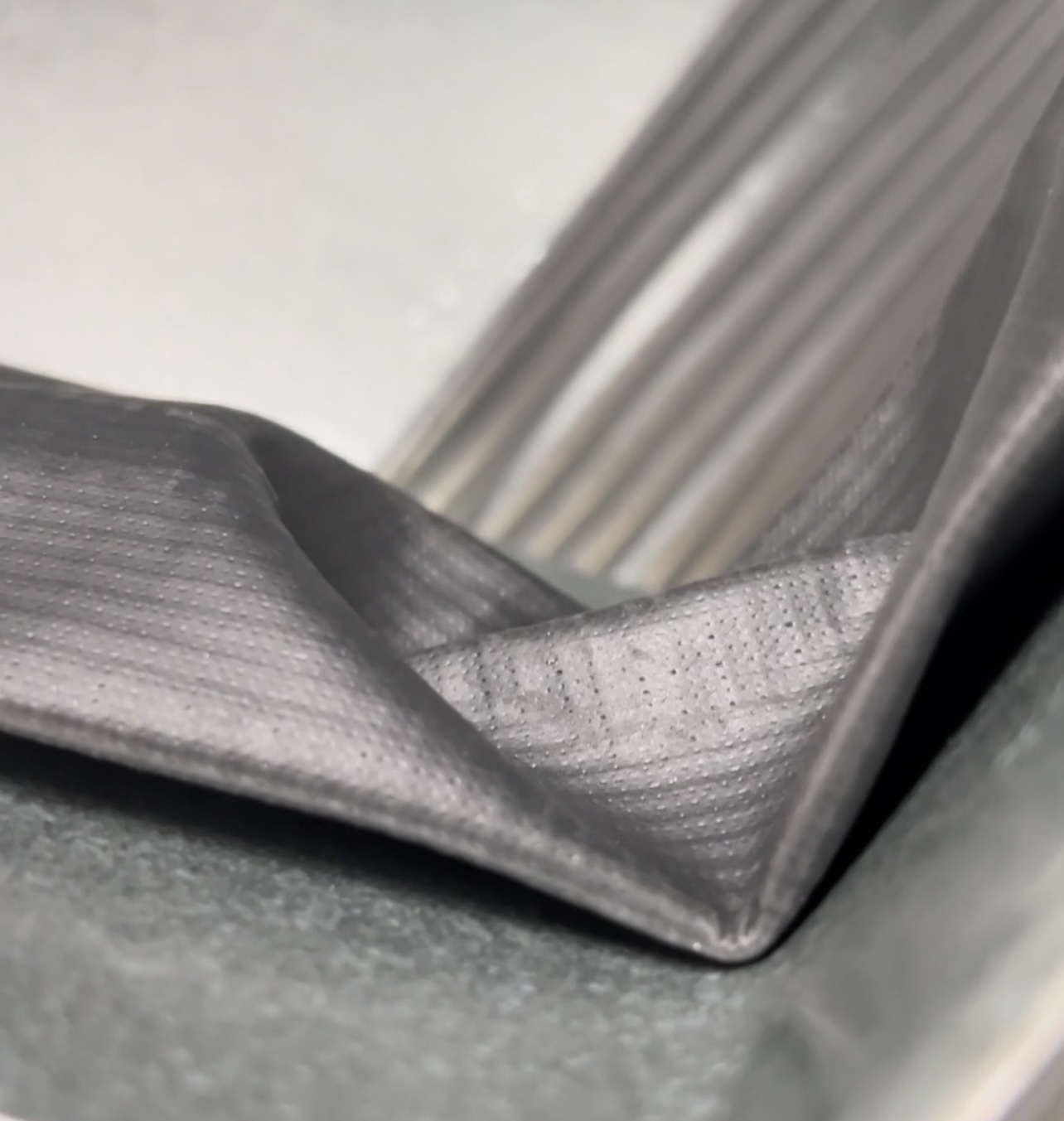
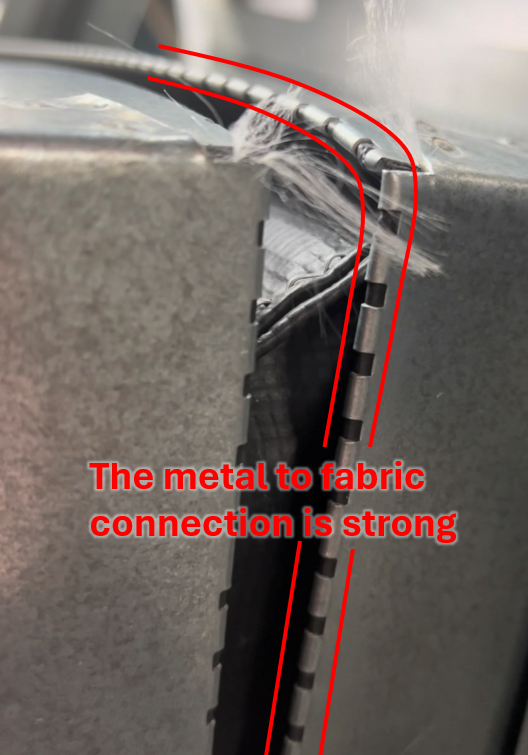
Where in the Ductwork are there lot’s of Flexible Duct Connections?
Rectangular duct jobs with Engineered specs will call for flexible duct connections to be installed into the ductwork so as to isolate vibrations and dissipate noise in the duct trunk line that would otherwise come from varying levels of air velocity moving thru the system.
Because much of this noise originates from the air handlers, blowers, inline exhaust fans and anything else that’s moving air from from the Mechanical Equipment thru the duct, it’s in those areas where one is most likely to see these Flexible duct connectors inserted into the system, oftentimes indistinguishable from the duct line to where it’s been attached and frequently seen alongside Spring Isolators that also service to muffle vibrations.
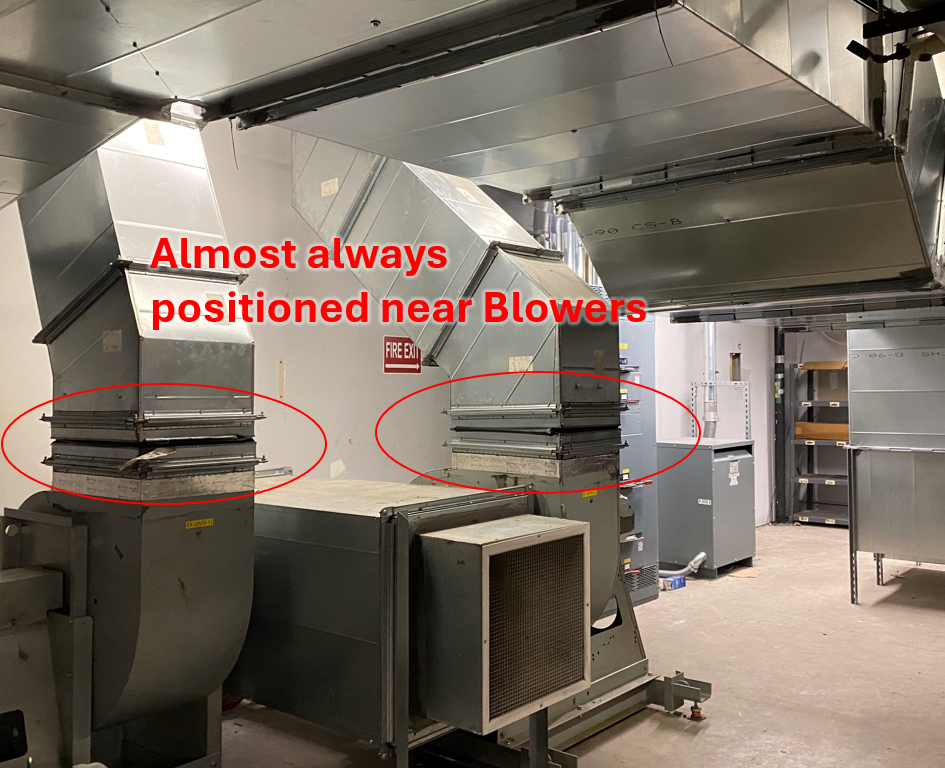
How Do You Fabricate a Flexible Duct Connector?
The duct shop makes flexible duct connections from a 100 ft roll of material that has sheet metal running down each edge and a flexible fabric in the middle. The dimensions of the Flex Connector will vary according to the the type of ductwork to which it’s being inserted.
For Slip and Drive duct as well as Ductmate Flange connections, the 3″ x 3″ x 3″ is typical.
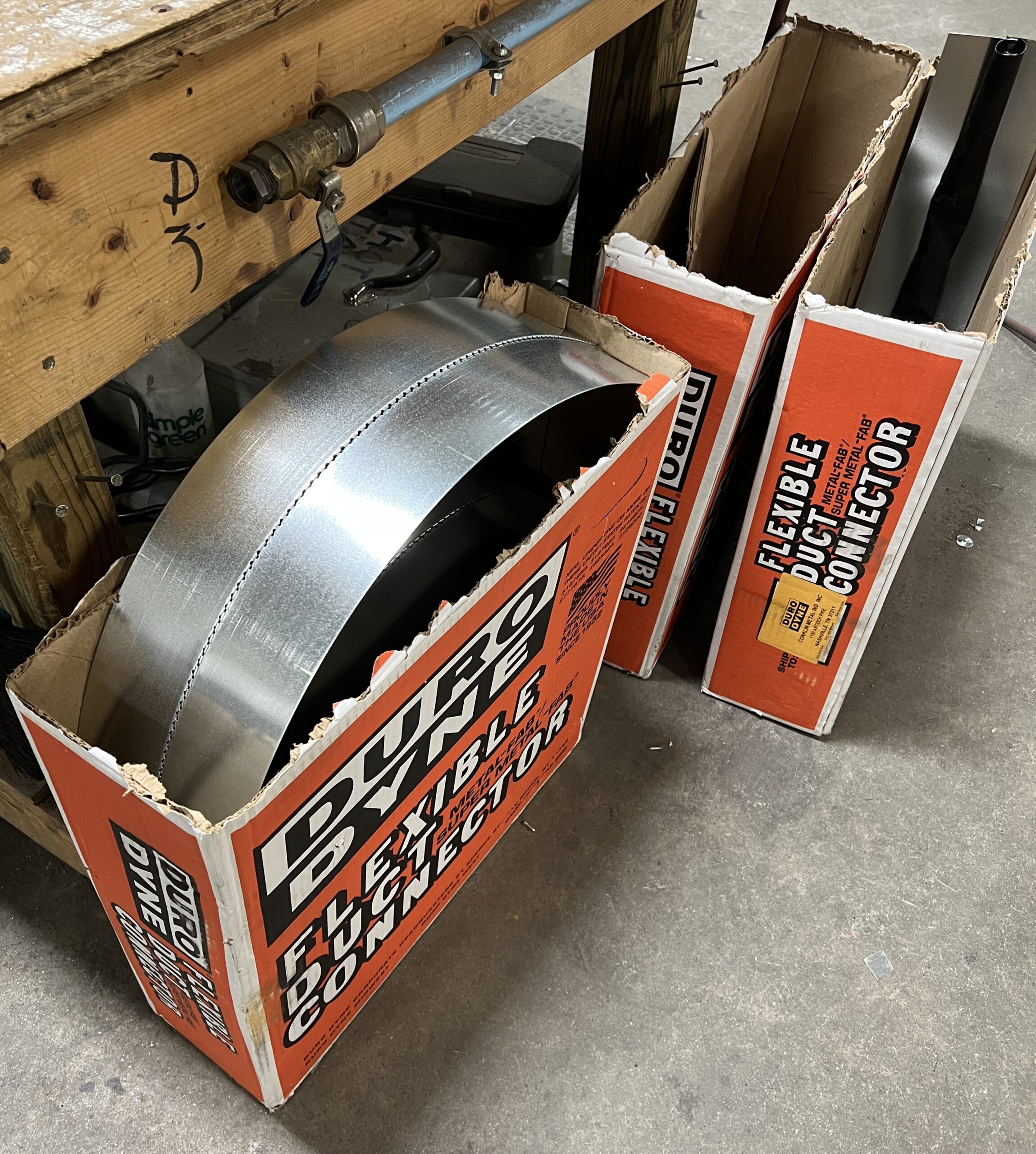
Yet for TDC ductwork, 4″ x 4″ x 4″ is used because the TDC machine uses 2-1/2″ of the metal edge to form it’s profile and the fingers get too close to the forming rolls using anything more narrow.
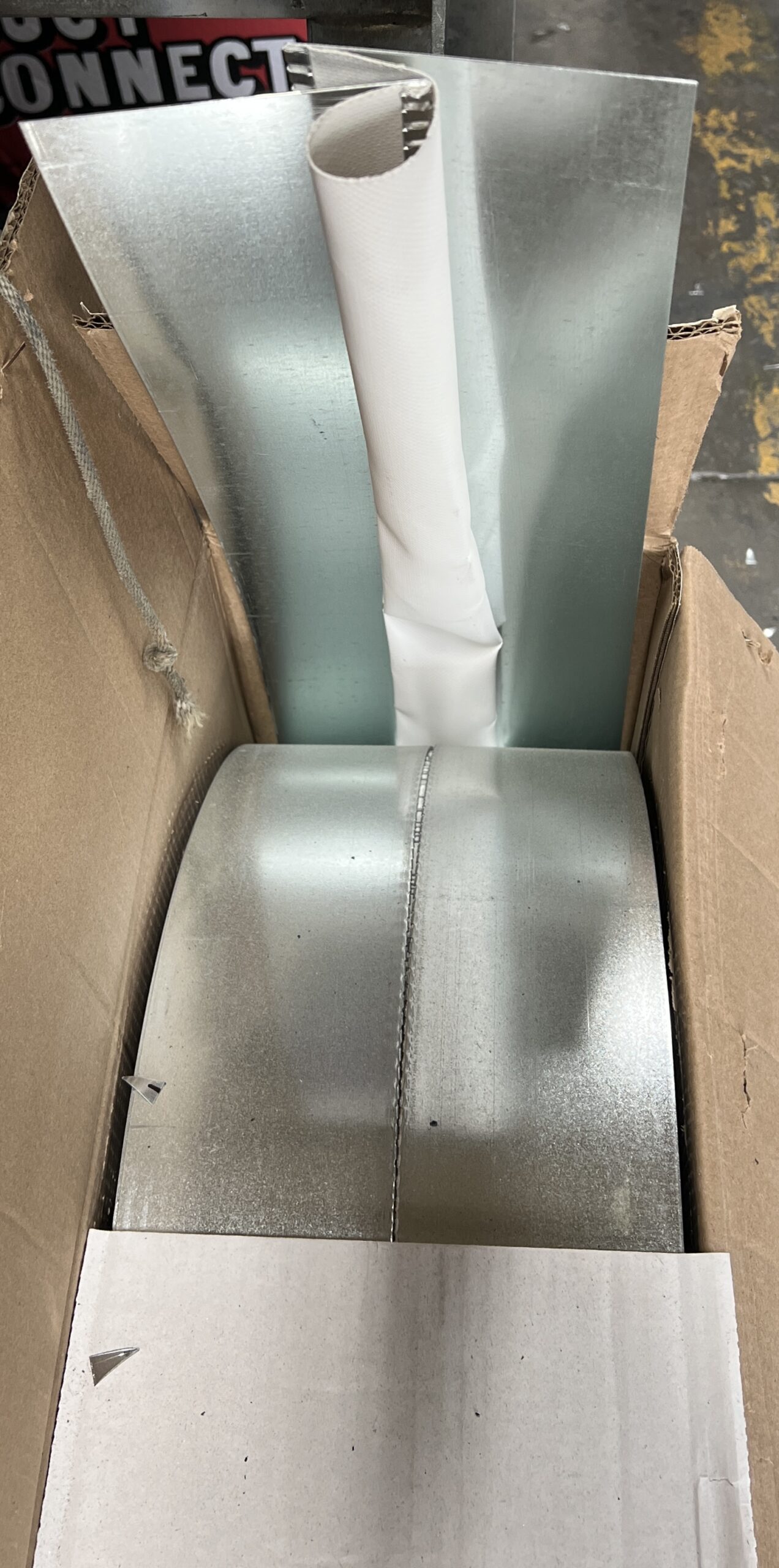
The duct shop pulls the required stretch out length needed from the box. This is determined by the duct’s dimensions, the stretch out being the total of four dimensions of the duct plus some additional for the overlap where the two ends will fasten to each other.
6″ x 6″ square duct for example would require a 28″ stretch out (6″+ 6″+ 6″ + 6″ + 4″) to equal the girth of the frame plus an 4″ lap.
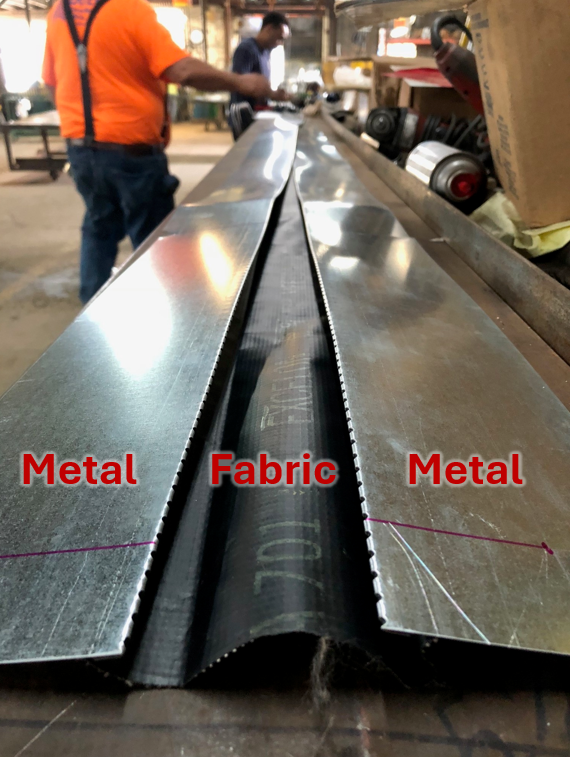
The craftsman then measures and marks up the Flex Connector with a scriber and scratch awl, then cuts the V notches and corner notches with Hand Snips
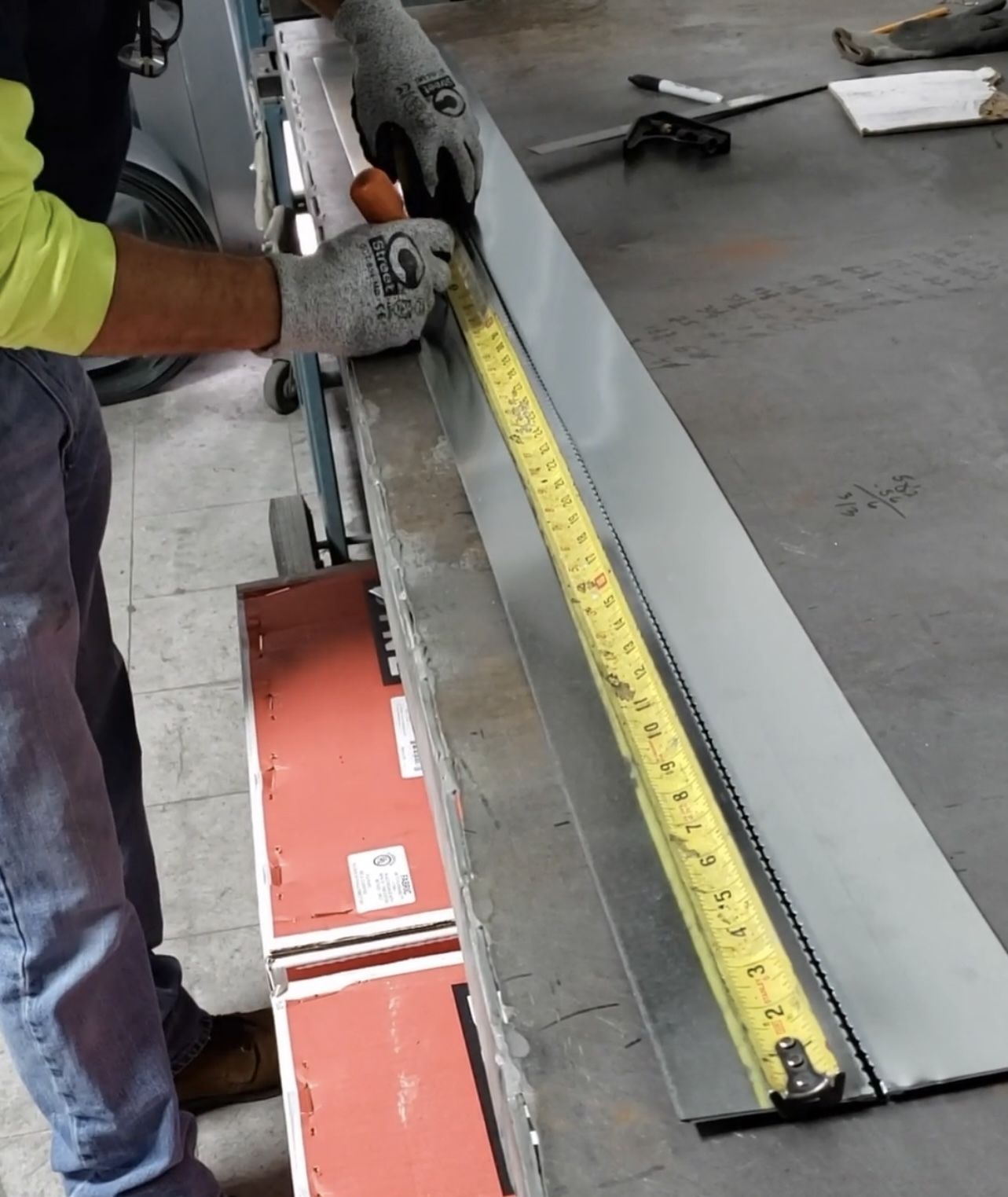
Sequence of Fabrication depends on what Transverse Joint Connection is being used…
From this point the sequence of the fabrication process will vary depending on whether the Ductwork is Slip and Drive or TDC/TDF.
If it’s going to be a TD Flex Connector, the stretch out of material is taken in the flat over the the TD (C Profile) rollformer.
Each edge of the Flex Connector is run thru the TD rollformer to form the TDC profile and then Bend it into a four sided frame.
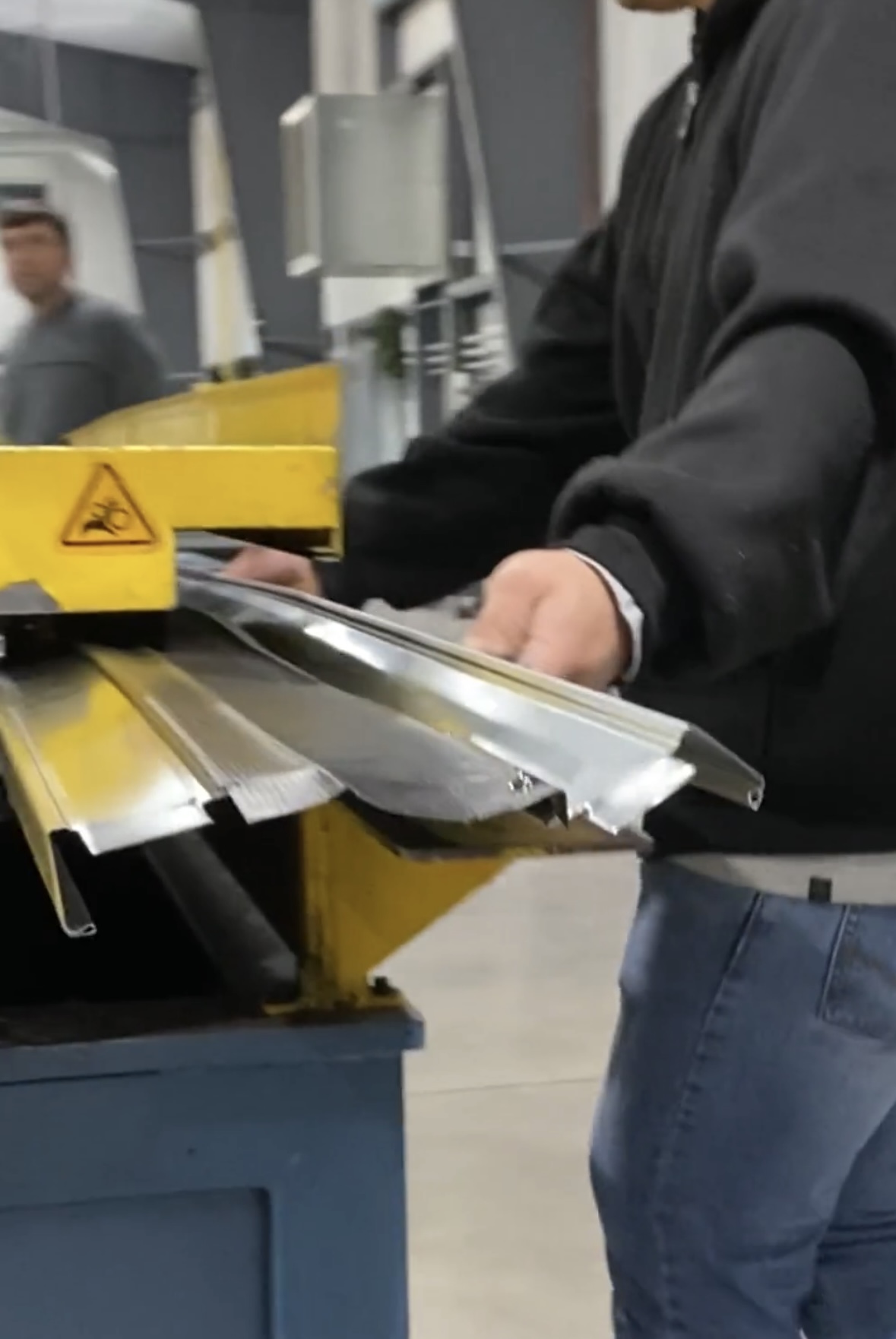
Slip and Drive Duct and Ductmate:
If it’s going into S and Drive or Ductmate flange ductwork, the shop will Take it to the Hand Brake first, make it into a four sided flexible frame matching the dimensions of the ductwork, then, if S and Drive, to a manual cleatbender where the drive is turned on two of the four edges.
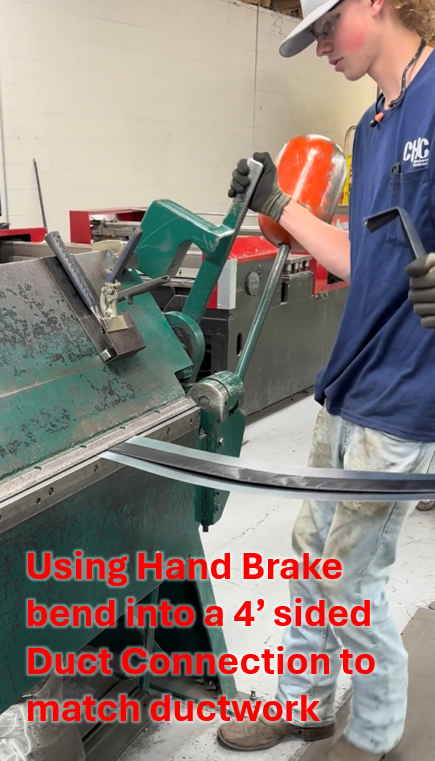
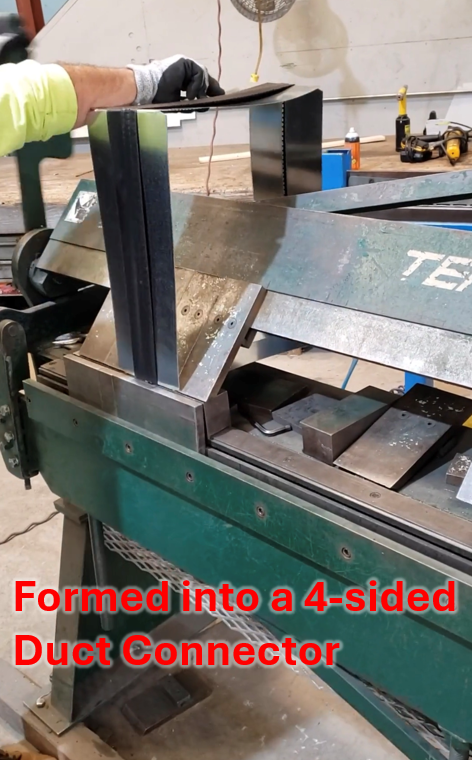
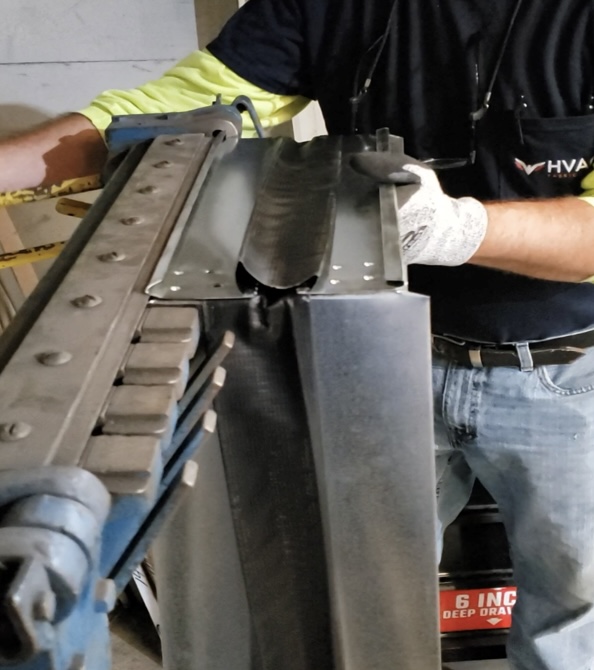
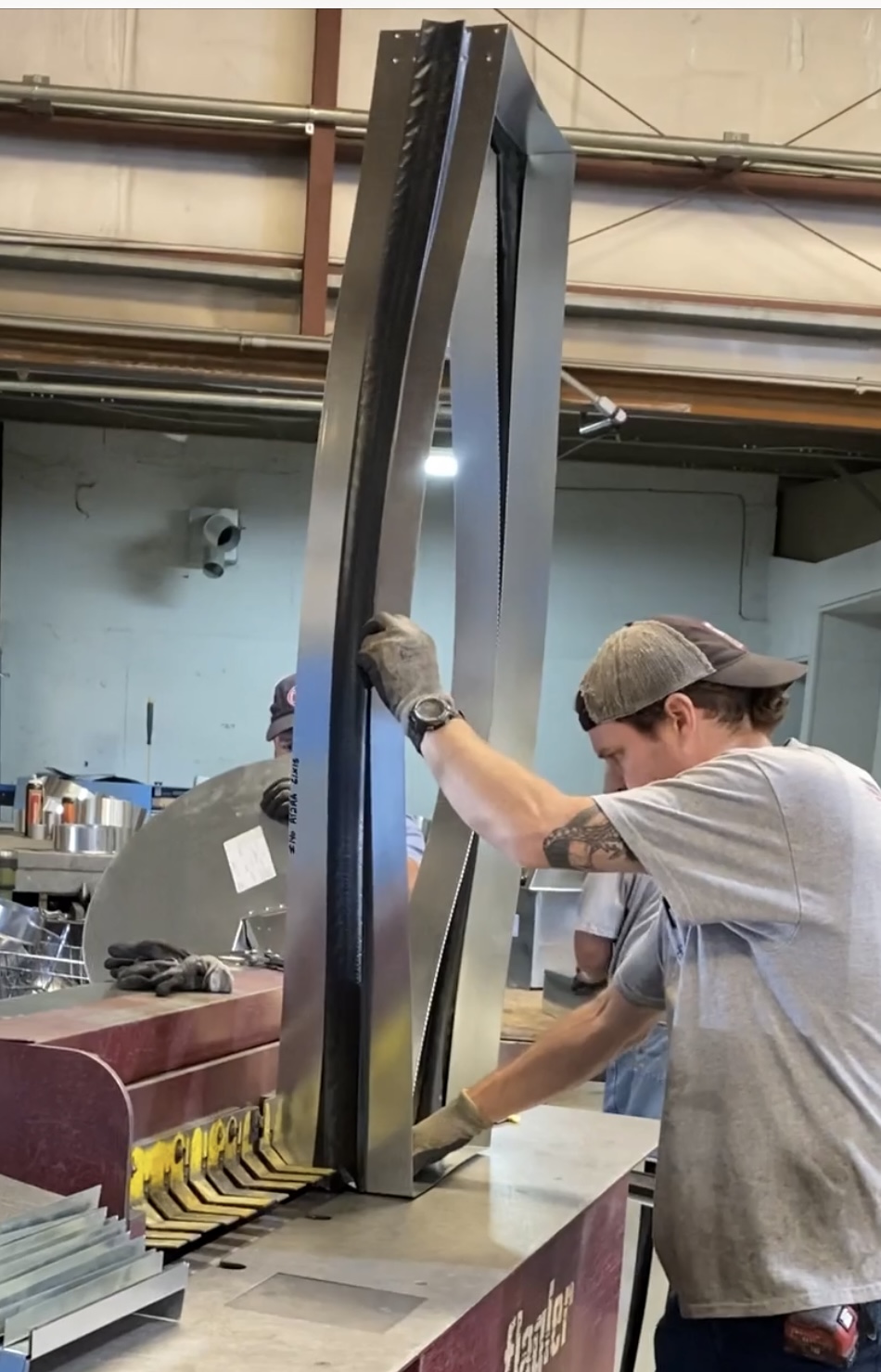
The metal overlap is then fastened with pop rivets, spotwelding or Clinching.
The remaining fabric overlap is then fastened with staples.
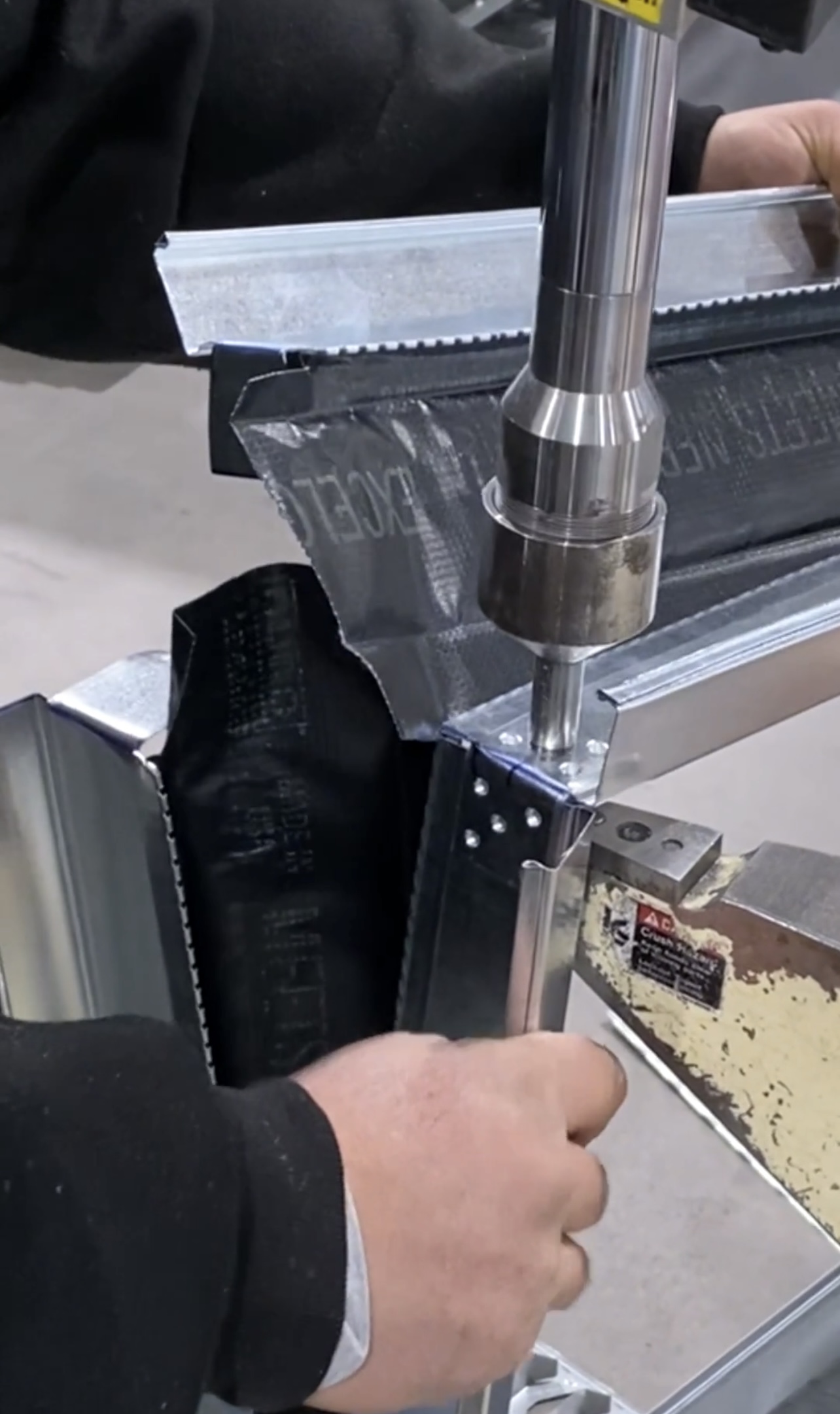
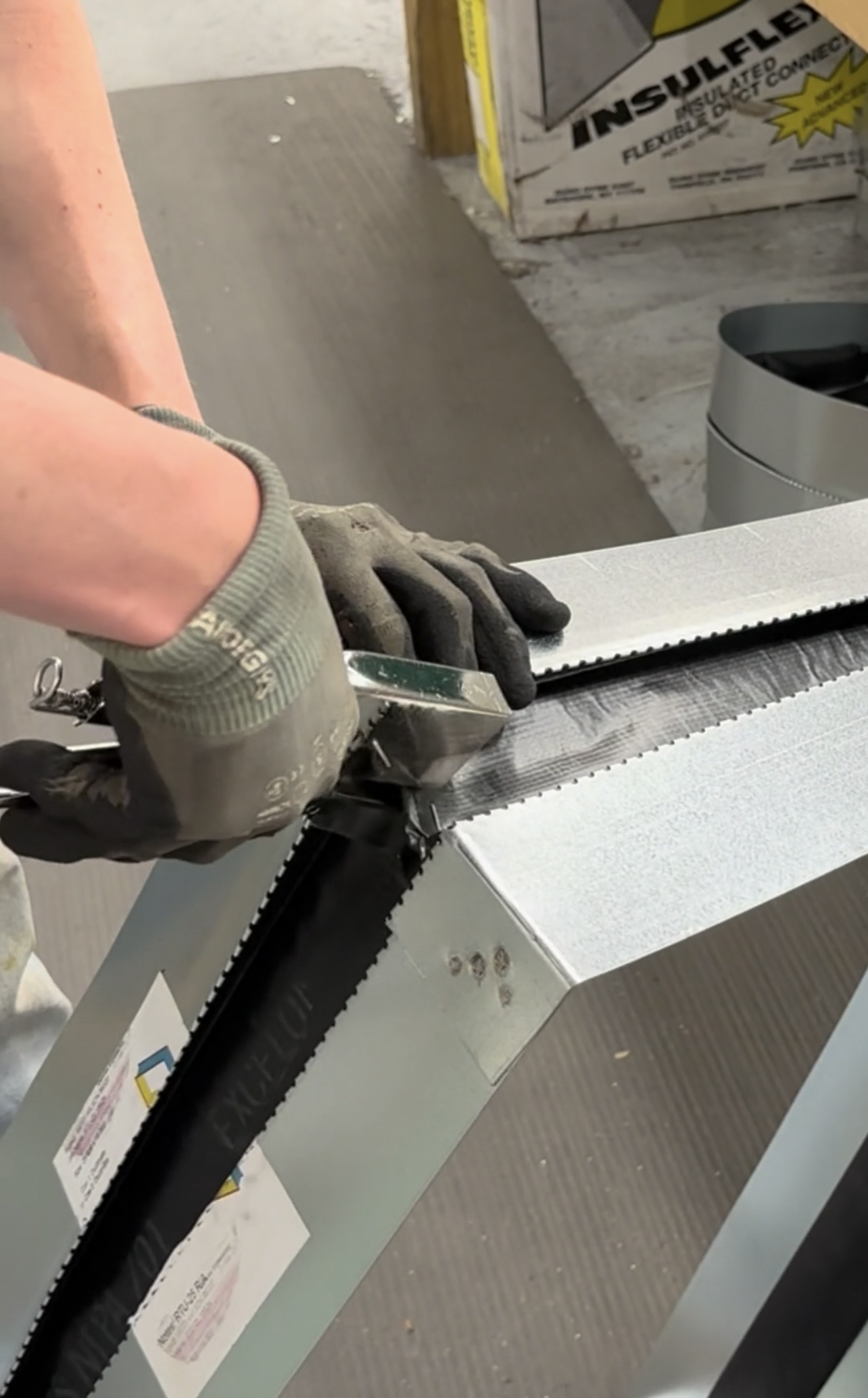
Request a Quote for Stapler for Flexible Duct Connector here
Rooftop and other Outside Duct Applications should be fabricated differently
Most applications of Flexible duct connections are inside the building. The rule of thumb in fabrication is to let the looped fabric face in on interior duct, but loop it out on Rooftop or other exterior duct so that the rain runs off of it rather than pool up in between the two lockseams.
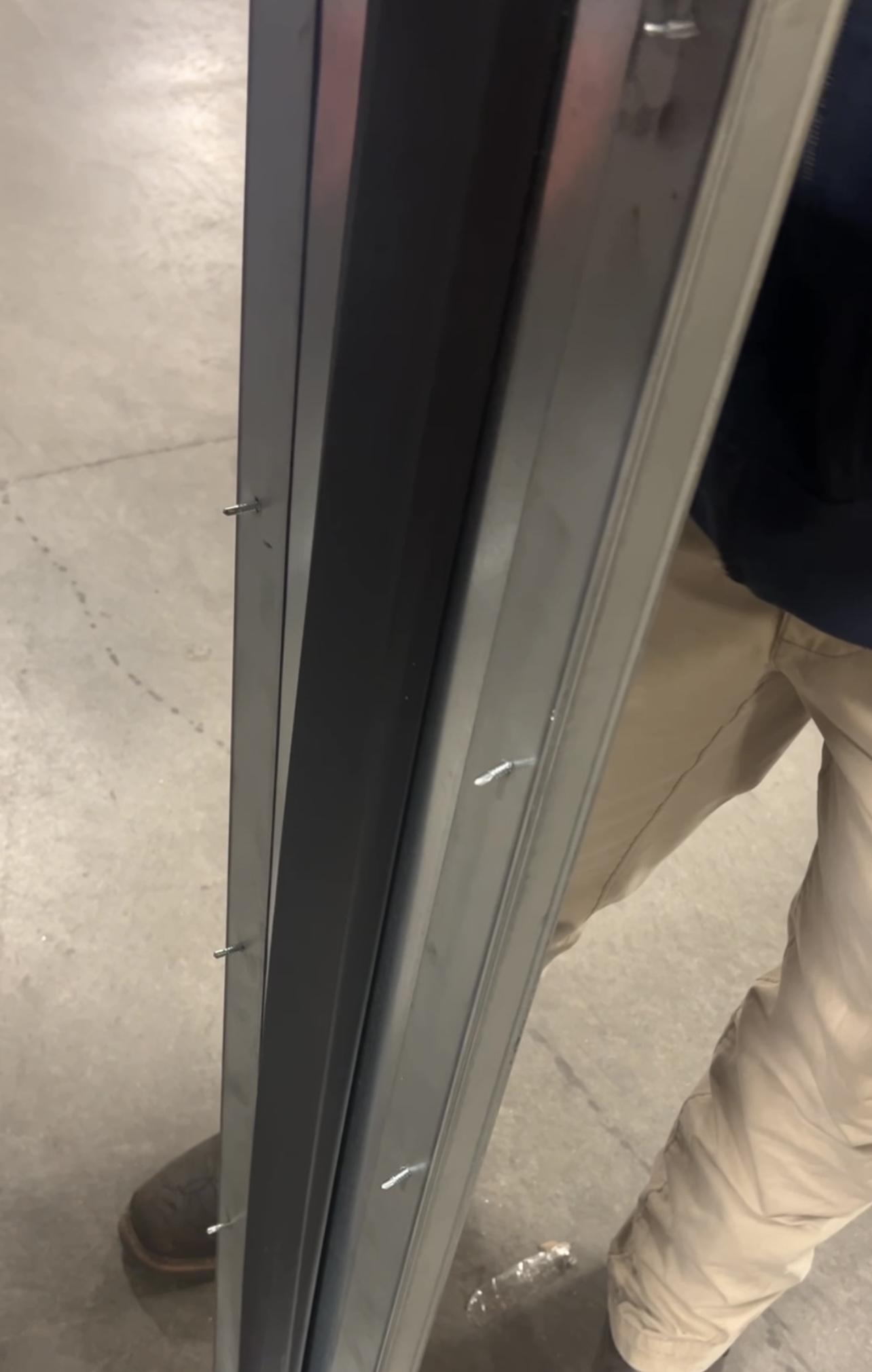
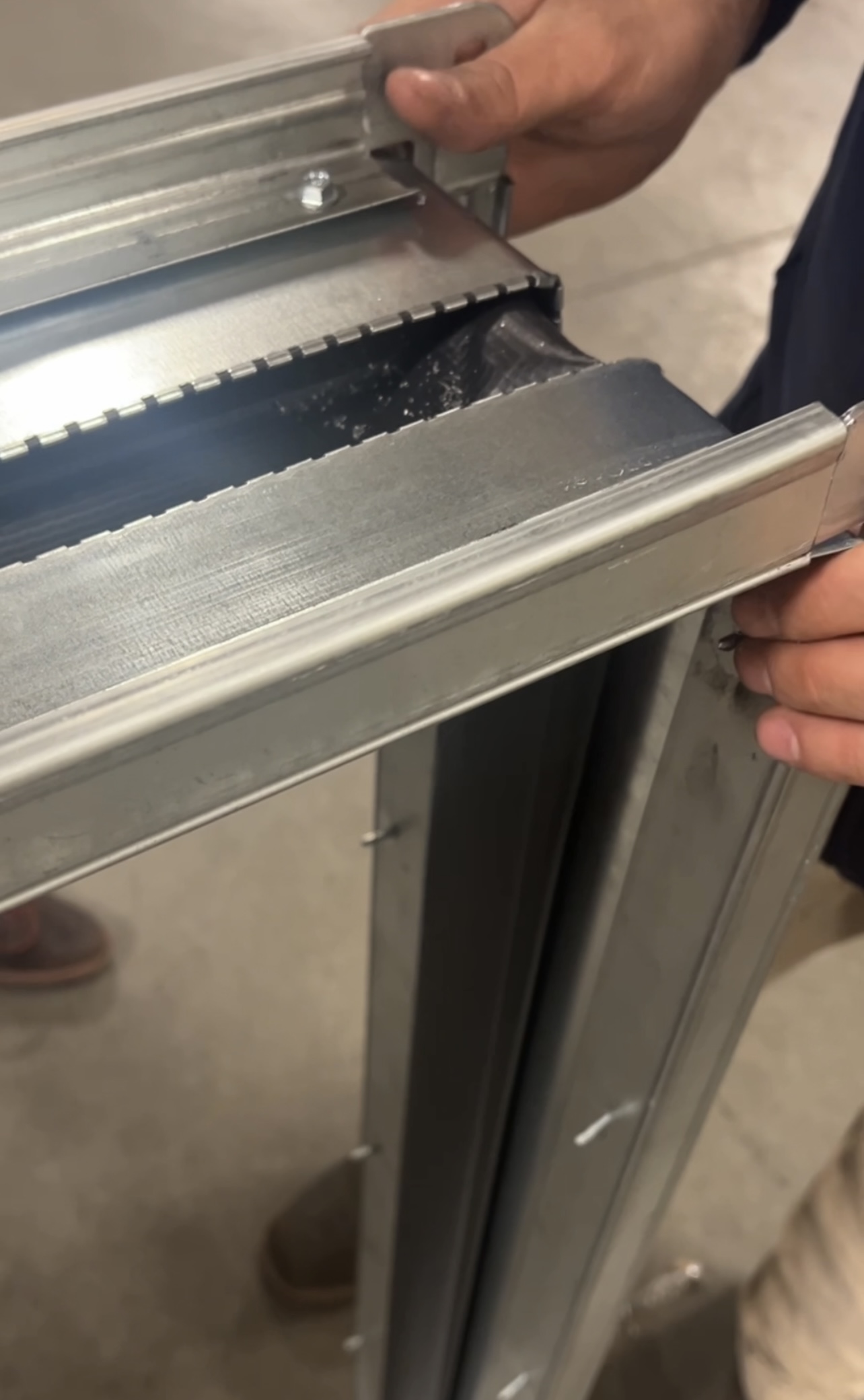
Sent to the Job Site by themselves, unattached to any Ductwork…
It’s very rare that the shop has an accurate measurement of the openings on the unit/fan to be ducted, and so it’s typical that the canvas connector frame will be left to be installed as part of the tie-in and thus sent to the job loose along with the tie-in package.
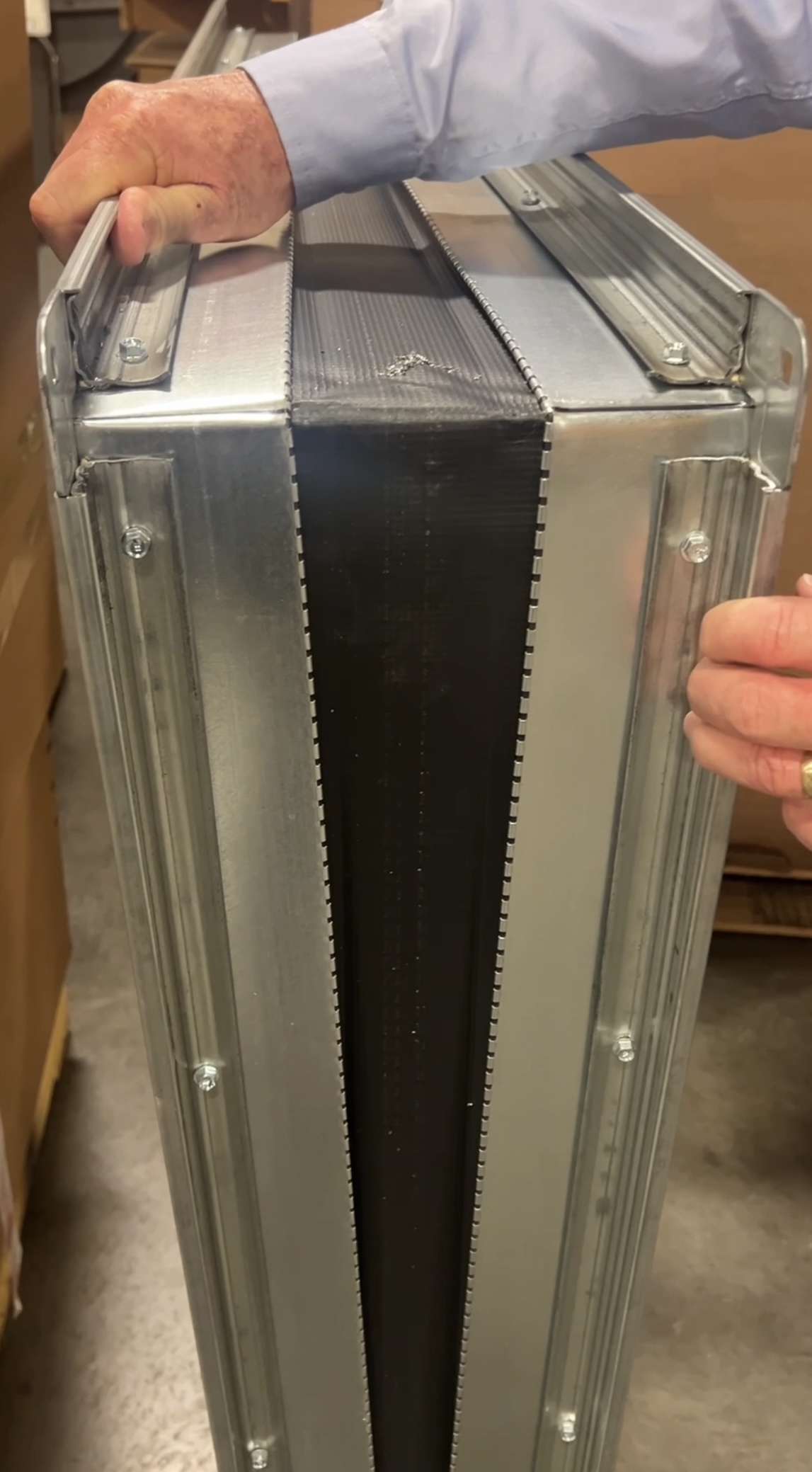
Installing Flexible Duct Connectors:
One of the benefits of flexible duct connectors is that they give the installer some leeway when installing the supply air and return air to the ducts, making the installer’s job of tying in the Supply Air and Return Air ducts to the unit much easier than trying to hard tie-in ducts. Given that the duct connector is flexible, it affords the installer some wiggle room in getting the ducts in place and joined up to the hung duct, even if the measurements aren’t perfect.

In terms of best practices when it comes to installation, installers need to make sure there is enough slack in the fabric for the duct to be dynamic as needed without letting the metal on either side of the fabric touch- in other words, not so close that that the two metal edges are touching yet not so far apart that the fabric is being pulled.
The Goal being that Under operating conditions, the flexible duct connector should move freely without pinching or stretching.
Why is Neoprene frequently in job specifications for Flexible Duct Connections?
Surplus Army Canvas was originally what was used in Flexible Duct Connectors. While it served the purpose of isolating vibrations, it also had several downsides. For one, it was prone to holding in moisture and then developing mildew and mold but it also wasn’t very tear resistant and therefore more prone to degrade over time with the constant push and pull caused by fans and blowers.
When Neoprene came out as the replacement for Army Canvas, it was far superior to the Army Canvas in every way. A woven fiberglass base double coated on both sides with enough Neoprene to give it a weight of 30 oz, Contractors were quick to change their standards to neoprene and it became specified by all the engineers at the time.
When Duro Dyne introduced a woven nylon polyester blend base they called Excelon, it had the features that make it in some ways a superior product to the of neopene—those being a higher abrasion and tear resistance.
But while the difference between using Army Canvas and using Neoprene was so vast that everybody went ahead and changed shop standards to that style, the Excelon came out as a harder sell because many contractors felt that the neoprene worked fine, and that the difference was not enough to change. Over time, most contractors DID change through the advocation by Duro Dyne coupled with the lower price of Excelon vs Neoprene.
Different fabrics for different applications….
Excelon/Vinyl is the majority of what’s used in commercial duct systems. With a base of woven nylon polyester, it’s the strongest of the fabrics when it comes to abrasion resistance and tear strength. In Flex Connector applications, there is frequently constant movement with material sometimes rubbing against one another, No other fabric matches up to Excelon’s Abrasion resistance and Tear Strength.
Neoprene fabric in chemical applications or when specificed by an engineer. It’s a Woven fiberglass base double Coated on both sides with neoprene getting to weight of 30 oz. While the Neoprene is heavier than the Excelon it does not have Excelon’s tear and tensile strength.
Durolon for Rooftop Duct and anything outdoors
Teflon fabric for High Temperature applications
Available in speciality metals like Stainless and Aluminum….
Not all duct is galvanized so there’s Stainless and Aluminum Flex Connectors too.

Request a quote for Stainless and Aluminum here: 333 Stainless, 333 Aluminum, 444 Stainless, 444 Aluminum
Available in rolls of “Fabric Only” for those special custom jobs….
Sometimes a shop fabricates a special application and for those instances the fabric is bought on it’s own. While the lock seam connecting the metal to the fabric is a key component of the product, some applications are so special that fabric is used on its own and fabricated into the custom metal being used.


Send us a quote request for Fabric Rolls here.
